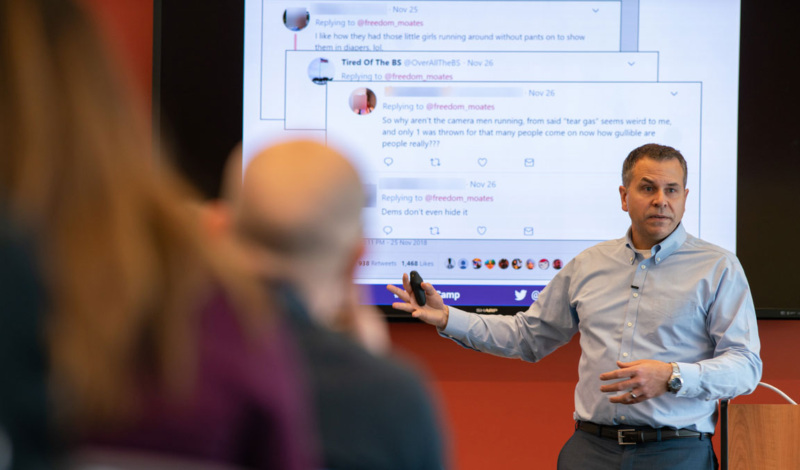
NLP responds to Mike Caulfield’s review of our work
Mike Caulfield, director of blended and networked learning at Washington State University’s Vancouver campus, has written a blog post in which he takes issue with what he understands to be the focus and methods of news literacy as a field.
“How ‘News Literacy’ Gets Web Misinformation Wrong” was published last month on Caulfield’s own website and earlier this month on Medium and Observer.com. In it, Caulfield specifically cites our Checkology® virtual classroom, a web-based e-learning platform for educators and students in middle school and high school.
We thank Caulfield for his interest in our work and for advancing the discussion on the literacies that contemporary students need to learn to become critical thinkers. For him, it’s web literacy; for us, it’s news literacy. In many ways, we agree with Caulfield’s ideas; in others, we take a narrower view. In this case, we believe his critique of our work offers an opportunity to demonstrate how we define and teach news literacy.
The News Literacy Project was founded in 2008 with this guiding principle: to teach students to sort fact from fiction in the digital age. Our lessons have been successfully implemented in middle schools, high schools, libraries and after-school programs, starting with our first pilots in the spring of 2009. They’ve also been embraced by educators: As many as 5,600 teachers serving more than 850,000 students throughout the United States and in 50 other countries have registered to use the Checkology® virtual classroom since it was released last May.
In his piece, Caulfield tries to address what he considers weaknesses in the Checkology® platform. However, the resource that he references throughout his piece is not the virtual classroom, and it is not part of the Checkology® lessons. It is a one-page set of guidelines, “Ten Questions for Fake News Detection,” that we created last year in the middle of the rising public awareness about so-called fake news.
This graphic organizer is intended to help students detect a very specific type of misinformation by walking them through a series of questions that raise red flags about the authenticity of a piece of ostensible news. Like many of the student resources we publish, these questions were created to help students understand the significance of specific details in a piece of information, with the expectation that they will begin to use them instinctively when they come across news and other types of information.
Caulfield’s critique takes this list of questions out of context in an attempt to show how it falls short as a practical, effective process for evaluating the general credibility of all types of information. To try to prove how this process fails in practice, he also picks up passages (including student quotes) from a news report about students who have used the Checkology® virtual classroom.
Some Clarifications
Had Caulfield called us to verify what he was writing about — a key point in both web and news literacies — we would have been able to clarify a few things.
First, the “Ten Questions” worksheet is not the Checkology® virtual classroom. Second, it was never intended to be used as a full process for evaluating the credibility of all types of information. Finally, we would have pointed out that pulling quotes from an unrelated report is unfair, even if the students quoted were making statements about the same guidelines Caulfield is attacking. We could have provided examples of how teachers and students are finding the virtual classroom extremely valuable.
Caulfield runs his own media literacy initiative, a wiki-based fact-checking website aimed at secondary and post-secondary students. We applaud his efforts to create a hub for what he calls “web literacy,” because the goals and methods of web literacy are largely identical to those of news literacy. We agree, for example, that students need to experience news and media and web and information literacy in the context in which they experience information and that this instruction needs to result in a functional, practical difference in the way they consume and create information.
We too believe that students need a community of practice where they can exercise these skills. We applaud Caulfield’s dedication to creating a community in which students from schools across the country can either write up entries on specific claims or edit and question existing claims by others. We also believe that students need to be taught news/media/web/information literacies in the language of the web. They need to learn to look for sources that are linked and notice when they’re not; to follow a series of links “upstream” to the original claim and then assess that original claim; and to follow links and search results to other pieces of information about the same topic.
We at the News Literacy Project are proud of the work that we are doing to create a news-literate next generation. We intend to continue to improve on these efforts and welcome constructive criticism from Caulfield and others to help us do so. We hope that those who join us in this vital mission will hold themselves to the same standards we ask our students to apply to the news and information that they consume and create.